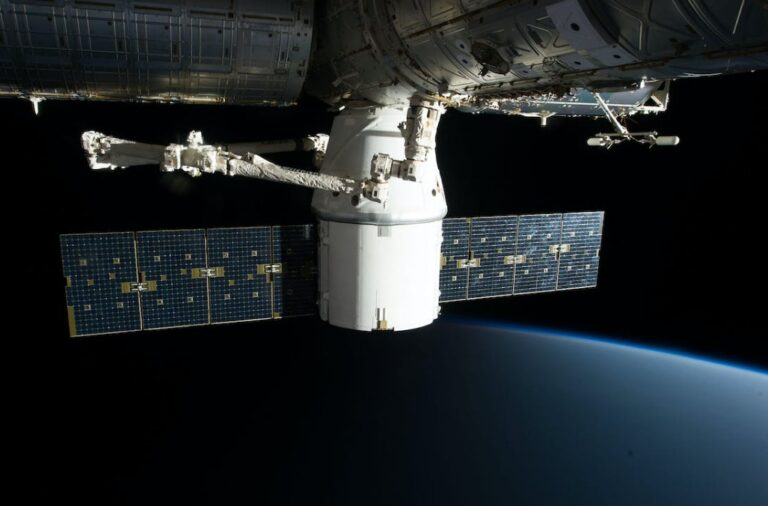Satellite-based internet communication systems have seen an unheard-of technological advancement in recent years. Among these ground-breaking projects, SpaceX’s Starlink has distinguished itself as a game-changing answer to problems with global connection.
With the help of a massive constellation of low Earth orbit (LEO) satellites, this ambitious project hopes to reach even the most remote regions of the globe with high-speed, low-latency internet connectivity.
Table of Contents
The overview
The SpaceX satellite internet constellation project, which was created by Elon Musk’s aerospace company, is called Starlink.
Starlink’s primary objective is to deliver a worldwide, high-speed, and low-latency internet connection to places with little to no traditional internet infrastructure, particularly remote and underserved portions of the globe.
To create a network of connected satellites that orbit the Earth at altitudes ranging from roughly 340 km (211 miles) to 1,200 km (746 miles), Several hundred little satellites will be launched into low Earth orbit (LEO).
Traditional geostationary satellites, on the other hand, orbit significantly higher, at a height of around 35,786 km (22,236 miles) over the equator.
Impact of Starlink on the world and its social implications
The social and global ramifications of Starlink are extensive and have the potential to drastically alter many facets of daily life. Here are some of Starlink’s major effects and ramifications:
1. Bridging the digital divide
Starlink’s ability to close the digital divide is one of the most important societal implications. The availability of traditional internet infrastructure varies greatly across the globe, especially in rural and remote locations, where it is frequently nonexistent.
High-speed connectivity may be delivered to these underserved areas through Starlink’s satellite-based internet service, enabling communities to have access to information, opportunities for economic growth, and healthcare and education.
2. Better education and learning opportunities
Students in remote locations can access online educational resources, take part in virtual classes, and interact with educational platforms when they have stable internet access.
By enabling students to access a wide range of instructional information and interactive technologies, regardless of where they are physically located, Starlink can improve distance learning options.
3. Socio-economic development
In underdeveloped areas, dependable internet service helps accelerate socioeconomic development. It can help with e-commerce, internet ventures, and digital entrepreneurship, opening up worldwide markets for regional companies.
Communities can be empowered by having access to information and communication, which will allow them to engage in the digital economy and enhance their quality of life in general.
4. Disaster response and connectivity
Communication networks are frequently down during natural disasters and humanitarian crises. Emergency personnel and impacted communities may find Starlink’s satellite-based connectivity to be a vital lifeline, allowing for real-time communication and coordination in disaster-stricken areas.
5. Environmental research and monitoring
Starlink’s satellite network can be used for environmental investigation and observation. To improve decision-making and conservation efforts, satellite data can be useful to investigate environmental phenomena such as climate change, deforestation, natural catastrophes, and others.
6. Global collaboration and communication
Starlink’s extensive coverage can promote improved international cooperation and communication between people, organizations, researchers, and governments. It can promote a more interconnected and interdependent society by facilitating international collaborations, cultural exchange, and chances for global networking.
Read also: China challenges Elon Musk’s Starlink: ready to launch 13,000 satellites
Challenges and considerations
Starlink has enormous potential for improving global connection. But it also faces several pressing issues that must be resolved if the project is to be successful in the long run. The following are some of the main difficulties that Starlink faces:
1. Management and deployment of satellite constellations
Launching and upkeep of tens of thousands of satellites in low Earth orbit is a difficult and expensive task. One of the biggest engineering challenges for SpaceX is making sure the satellite constellation is deployed effectively and is operated dependably.
To prevent collisions and help with the expanding problem of space debris, the corporation must carefully manage satellite launches, orbital locations, and end-of-life disposal.
2. Space debris mitigation
Concerns about space debris are raised by the expansion of satellites in low-earth orbit (LEO), as inactive or non-operational satellites could endanger active satellites and other spacecraft by colliding with them. To reduce the negative effects on the space environment, SpaceX and other satellite operators must adopt efficient space debris mitigation measures.
3. Spectrum interference and regulatory issues
To facilitate communication, satellite constellations like Starlink need a specific radio frequency band. It might be difficult to coordinate and manage this spectrum allotment with numerous national and international regulatory organizations. Another major issue to address is spectrum interference with currently operating satellite systems and ground services.
4. Effect on astronomy
The Starlink satellites’ brightness can obstruct astronomical views. Especially when they pass overhead and reflect sunlight, making them visible to the naked eye. Common names for this phenomenon include “satellite trails” and “satellite trains.”
Astronomers are nonetheless concerned about the possible influence of SpaceX’s satellites on scientific study and night sky observation. Despite the company’s efforts to make the satellites less reflective and add sunshades.
5. Ground infrastructure and rural distribution
Starlink uses a network of ground stations to connect to the terrestrial internet backbone, despite its satellite network’s ability to provide worldwide coverage. It can be difficult and expensive to expand and maintain these ground stations, especially in rural locations.
The future of connectivity
Starlink represents a transformative force in the future of global connectivity. By connecting the unconnected and revolutionizing internet access in remote areas, it has the potential to shape economies, education, research, and communication on a global scale.
As the project evolves, careful attention to regulatory compliance, sustainability, and ethical considerations will be essential to ensure that the benefits of Starlink are maximized while addressing potential challenges.
Read also: China beats Musk: first methane-oxygen space rocket launched












